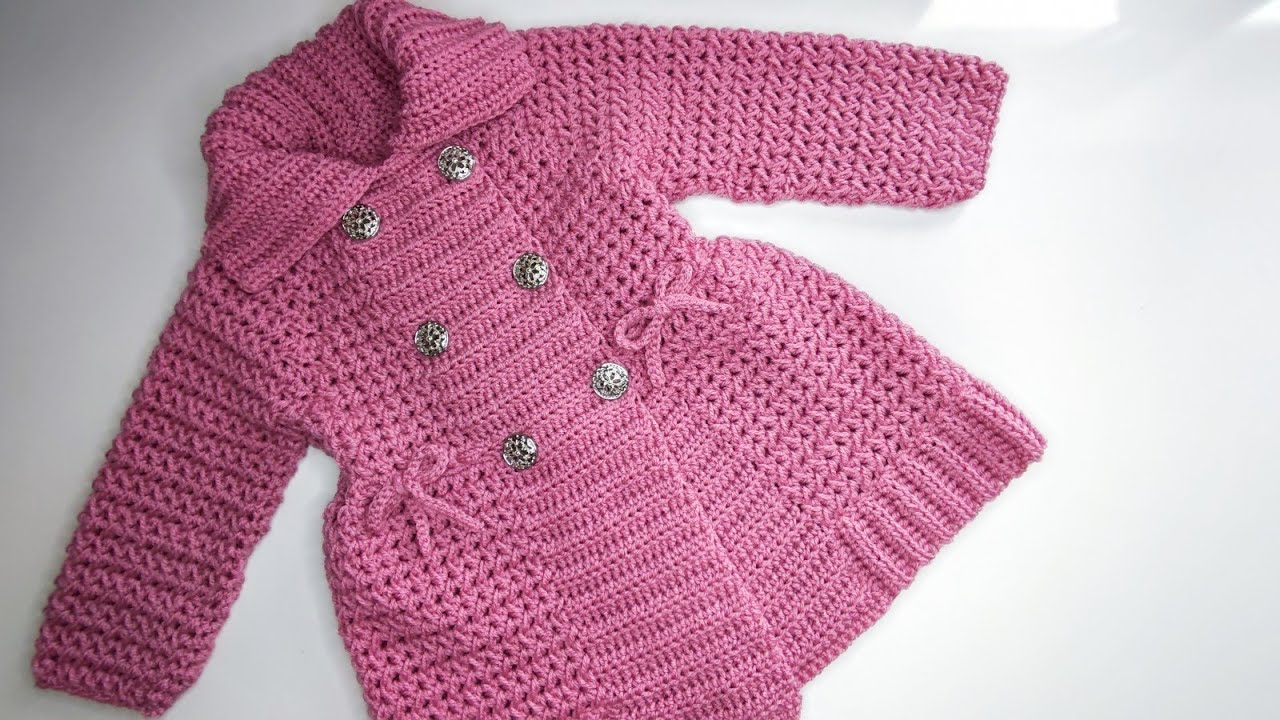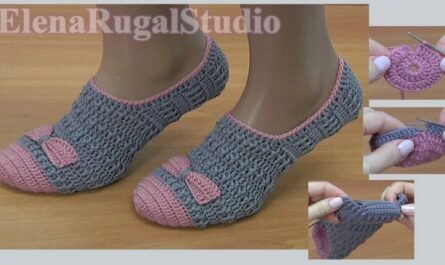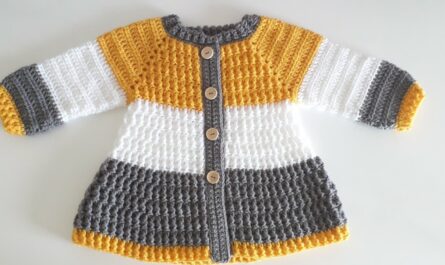The double-breasted style is synonymous with timeless elegance and sophisticated tailoring. Adapting this classic look to a crocheted coat or cardigan for girls creates a garment that is not only charmingly stylish but also offers an extra layer of warmth and a truly unique handmade touch. This detailed guide will explore the intricacies of crocheting a double-breasted piece, focusing on its distinguishing features and offering a step-by-step approach to bring this chic design to life.
What Makes a Double-Breasted Garment Unique?
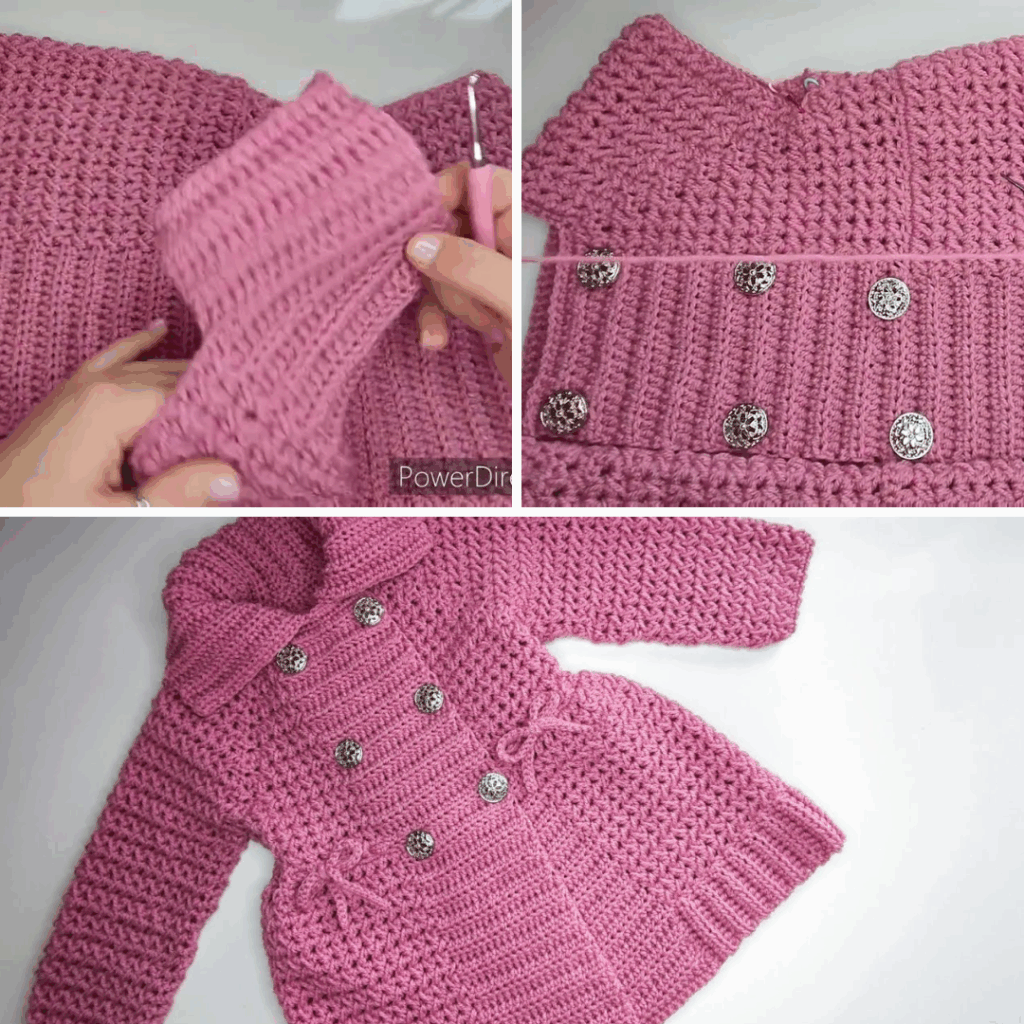
A double-breasted coat or cardigan is defined by several key characteristics:
- Overlapping Front Panels: The most obvious feature. The front of the garment extends significantly past the center, creating a generous overlap.
- Double Row of Buttons: Typically features two vertical rows of buttons. One row is functional, securing the overlap, while the other is decorative, mirroring the functional row.
- Structured Collar/Lapels: Often paired with a more substantial collar, such as a wide shawl collar or sharp notched lapels, adding to its tailored appearance.
- Enhanced Warmth: The overlapping layers provide additional insulation, making it a particularly effective design for a coat.
- Tailored Aesthetic: Even in crochet, the double-breasted style lends itself to a more structured and polished look compared to a simple single-breasted cardigan.
Why Crochet a Double-Breasted Coat/Cardigan for Girls?
- Timeless Fashion: The double-breasted design is a classic that transcends trends, ensuring your handmade garment will be cherished for years.
- Superior Warmth: The overlapping front panels offer an extra barrier against cold, making it ideal for cooler weather.
- Personalized Elegance: Choose luxurious yarns, unique buttons, and custom colors to create a piece that perfectly matches a girl’s personality and style.
- Heirloom Potential: A sophisticated, custom-made garment like this has high potential to become a cherished family heirloom.
- Skill Advancement: Tackling a double-breasted design offers excellent opportunities to learn precise shaping, master buttonhole placement on overlapping panels, and conquer more complex collar constructions.
- Truly Special Gift: For a special occasion or just because, a double-breasted coat or cardigan is a thoughtful and impressive gift.
Choosing Your Tools & Materials:
Careful selection of materials is paramount for achieving the desired drape, structure, and finish of a double-breasted garment.
- Yarn: The Foundation of Form and Warmth
- Fiber:
- Superwash Merino Wool: Highly recommended for its softness, excellent warmth, and beautiful drape, which is essential for the tailored look. It’s also conveniently machine washable (check label!).
- Acrylic Blends (e.g., Acrylic/Wool, Acrylic/Nylon): A durable, affordable, and easy-care option. Modern acrylics offer good stitch definition and come in a vast array of colors suitable for a well-defined garment.
- Cotton/Acrylic Blends: Suitable for a lighter cardigan or a coat for milder climates. Cotton provides breathability and crisp stitch definition, but may lack the warmth and structured drape of wool blends.
- Weight:
- Worsted (Aran / Category 4): Ideal for a substantial, warm coat, offering good stitch definition and working up at a reasonable pace.
- DK (Double Knitting / Category 3): Perfect for a lighter coat or a more structured cardigan. It creates a finer fabric while still providing warmth.
- Sport (Category 2): Best for a very light, delicate cardigan where minimal warmth is needed.
- Color Palette:
- Classic Coat Colors: Navy, charcoal grey, camel, deep forest green, burgundy, or classic black/white for a timeless appeal.
- Softer Tones: Pastels, muted jewel tones, or subtle variegated yarns can create a charming cardigan.
- Quantity: Due to the overlapping panels, a double-breasted garment requires more yarn than a single-breasted one of the same size. Expect to need 800-1200 yards for smaller sizes (2T-4T) and 1200-2000+ yards for larger sizes (6Y-10Y), depending on yarn weight and length. Always consult your chosen pattern’s specific recommendations.
- Fiber:
- Crochet Hook:
- Consult your chosen yarn label for a suggested hook size (e.g., 3.75mm, 4.0mm, 4.5mm, 5.0mm).
- Crucial for Garments: Your actual hook size will be determined by achieving the correct gauge for your pattern. You will almost certainly need to adjust your hook size (up or down by half a size) to ensure the proper fit, drape, and the correct functionality of the overlapping panels.
- Other Notions:
- Stitch Markers: Essential for marking raglan lines, the beginning of rows/rounds, and especially for precise buttonhole and button placement.
- Tapestry Needle: For neatly weaving in all yarn ends and sewing any decorative appliques.
- Scissors.
- Buttons: You’ll need 6 to 12 buttons, typically arranged in two vertical rows of 3 to 6 buttons each. Choose buttons that are flat, complement your yarn, and fit through your buttonholes.
- Sewing Needle & Matching Thread: To securely attach the buttons.
- Measuring Tape: For frequent measurements during construction.
- Blocking Mats & T-Pins: (Highly recommended) For shaping and achieving a professional, crisp finish.
Understanding Sizing & Gauge (ABSOLUTELY CRITICAL for Garments!)
Accurate sizing is the cornerstone of a well-fitting, comfortable, and aesthetically pleasing garment, especially with the precise requirements of a double-breasted design.
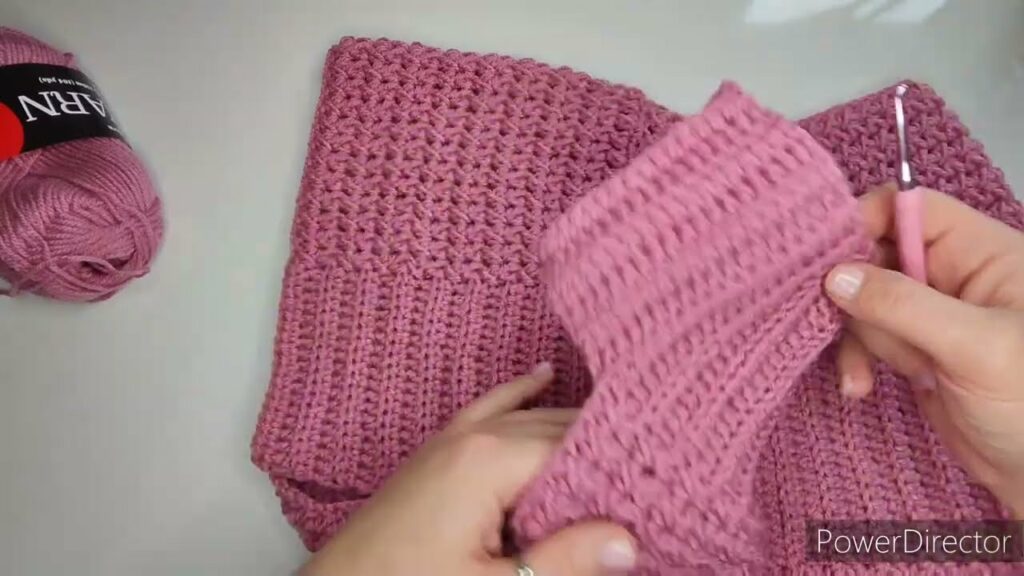
General Girls’ Sizing (Approximate Measurements):
| Size | Approx. Chest Circ. | Approx. Finished Body Length (Shoulder to Hem) | Approx. Sleeve Length (Underarm to Cuff) |
|---|---|---|---|
| 2T | 21 inches | 14-16 inches | 9-10 inches |
| 4T | 23 inches | 16-18 inches | 10-11 inches |
| 6Y | 25 inches | 18-20 inches | 11-12 inches |
| 8Y | 27 inches | 20-22 inches | 12-14 inches |
| 10Y | 28 inches | 22-24 inches | 14-16 inches |
Export to Sheets
Disclaimer: These are general averages. Always refer to the specific pattern’s measurements and sizing chart.
How to Make a Gauge Swatch (Do NOT Skip This Step!):
- Chain: Chain about 25-30 stitches, plus any turning chains (e.g., ch 3 for dc) as per your chosen main stitch pattern.
- Work: Crochet a square of at least 6×6 inches (15×15 cm) in the main stitch pattern you’ll be using for the coat/cardigan. A larger swatch provides a more accurate measurement.
- Wash & Block: Fasten off your swatch. Crucially, wash and block your swatch exactly as you plan to treat the finished garment. This step relaxes the fibers and reveals the true stitch size and drape after washing, which can change significantly.
- Measure: Once dry, lay the swatch flat. Place a ruler over the center. Count how many stitches fit within 4 inches (10 cm) and how many rows fit within 4 inches (10 cm).
- Adjust:
- If you have more stitches per inch than your pattern (or desired gauge) states (your work is too tight), go up half a hook size and re-swatch.
- If you have fewer stitches per inch than your pattern states (your work is too loose), go down half a hook size and re-swatch.
- Repeat until your gauge precisely matches.
General Stitch Patterns for a Double-Breasted Garment:
- Main Body (for structure and warmth):
- Half Double Crochet (hdc): Creates a dense, warm fabric with excellent stitch definition and good drape, ideal for the tailored look.
- Double Crochet (dc): Works up faster, creates a softer drape, suitable for a lighter coat or cardigan.
- Moss Stitch (Linen Stitch): (sc, ch 1, sk 1) Produces a beautiful, dense, textured fabric with good drape and a modern feel, great for coats.
- Ribbing (for cuffs, hems, and collar edges):
- Front Post/Back Post Double Crochet (fpdc/bpdc): Creates a strong, elastic, and professional-looking ribbed edge.
- Single Crochet in Back Loop Only (sc blo): A simpler, stretchier ribbing option.
- Collar/Lapels: These can be worked in your main stitch, a ribbed stitch, or even a different texture like a basketweave for added visual interest.
Step-by-Step Construction: The Double-Breasted Coat/Cardigan
There are two primary construction methods: Top-Down (common for seamless cardigans) and Bottom-Up (often preferred for more structured coats with seaming). We’ll outline both, as the double-breasted front has unique implications for each.
Option A: Top-Down Construction (Common for Cardigans, Less Seaming)
This method starts at the neckline and works downwards, often creating a seamless garment.
- Phase 1: The Yoke (Top-Down, Raglan Shaping with Double-Breasted Front)
- Starting Chain: Chain the number of stitches specified by your pattern for the neckline, crucially including extra stitches for the overlapping front panels.
- Neckband/Front Bands: Establish the continuous bands that will run down the front of the garment. One side (usually the wearer’s right, or as per pattern) will have buttonholes incorporated into specific rows (e.g., ch 2, skip 2 stitches). The other side will be the wider overlap panel where buttons are sewn onto.
- Raglan Shaping: Divide your stitches for the front panels, sleeves, and back panel. You will have 4 raglan corners where all shaping increases occur. Continue working rows, increasing at these corners, while maintaining the flat front opening. Ensure the designated overlap panel remains significantly wider than the buttonhole panel.
- Continue working increase rows until the yoke reaches the correct depth from the neckline to the underarm.
- Phase 2: Separating for Body & Sleeves
- Separation Row: Work stitches for the first front panel. Work into the first raglan corner. Skip the first sleeve’s stitches (place them on a holder). Chain for the underarm (e.g., 2-4 stitches). Work into the next raglan corner. Work across the back panel. Work into the next raglan corner. Skip the second sleeve’s stitches. Chain for the underarm. Work into the final raglan corner. Work stitches for the second front panel. Turn.
- Phase 3: The Body (Torso)
- Body Rows: Continue working in rows using your main stitch, maintaining the flat front opening with the overlapping panels. The wider overlap panel should extend well past the center of the garment.
- Shaping: Maintain the width or add very slight increases for a gentle A-line, or decreases for a straighter fit, as per your pattern.
- Length: Continue working until the body reaches the desired length for a coat or cardigan.
- Hem: Finish the body with a few rows of ribbing (fpdc/bpdc or sc blo) for a neat and elastic edge.
- Phase 4: The Sleeves (Make 2)
- Join Yarn: Attach your yarn to the center underside of one armhole opening (where your underarm chain was).
- Work in Rounds: Pick up stitches evenly around the armhole opening. Join to form a round. Continue working in rounds using your main stitch.
- Shaping: Gradually decrease stitches over several rounds to taper the sleeve towards the wrist.
- Length: Work until the sleeve reaches the desired full length.
- Cuff: Finish the sleeve with a few rows of ribbing.
- Fasten off. Repeat for the second sleeve.
- Phase 5: Collar/Lapels (Optional, but key for Double-Breasted)
- This is often the most complex part of a double-breasted garment. Your pattern will provide detailed instructions.
- Pick Up Stitches: Pick up stitches evenly around the neckline and down the front opening edges.
- Work in Rows/Short Rows: Work the collar in rows, shaping it (e.g., a wide shawl collar, or a sharper notched lapel). This often involves increases, decreases, and potentially short rows to create the curve and fold.
- Ribbing: Finish the collar edge with ribbing for a polished look.
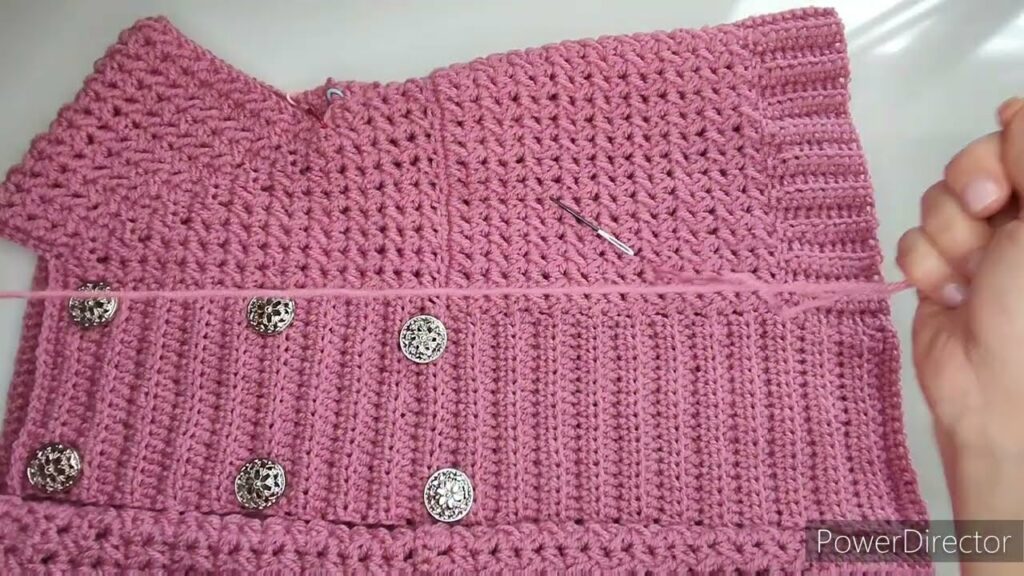
Option B: Bottom-Up Construction (More Structured Coats)
This method builds each piece separately (back, two fronts, two sleeves) and then seams them together.
- Phase 1: Back Panel: Work flat from the bottom hem up to the armholes. Shape the armholes and then the neckline/shoulders.
- Phase 2: Front Panels (Make 2): Work flat from the bottom hem up.
- Front Panel 1 (Buttonhole Side): This panel will be the “underlap.” Work to armhole, then shape armhole and neckline, incorporating buttonholes vertically up the front edge.
- Front Panel 2 (Button Side/Overlap): This panel will be significantly wider than the first to allow for the overlap. Work to armhole, then shape armhole and neckline. This is where your functional buttons will be sewn, with decorative buttons mirroring them.
- Phase 3: Sleeves (Make 2): Work flat from cuff to armhole, or in the round.
- Phase 4: Assembly & Seaming: Carefully seam the shoulder seams, side seams, and sleeve seams. Sew the sleeves into the armholes.
- Phase 5: Button Bands & Collar/Lapels:
- Button Bands: Pick up stitches along the front opening edges (including the overlapping panel). Work rows of ribbing or single crochet to create neat button bands. Ensure the buttonholes from Phase 2 are fully integrated.
- Collar/Lapels: Pick up stitches around the neckline and top edges of the button bands. Work the collar/lapels in rows, shaping as per your pattern (this might be integrated with the button bands).
Phase 6: Finishing Touches (Applicable to Both Methods)
- Weave in All Ends: Using your tapestry needle, meticulously weave in every single yarn tail. Secure them firmly by weaving into existing stitches in different directions. This is crucial for a neat, durable, and safe finish.
- Attach Buttons: This step is critical for a double-breasted garment.
- Functional Buttons: Sew one vertical row of buttons onto the top overlapping front panel, aligning them perfectly with the buttonholes on the under panel.
- Decorative Buttons: Sew the second vertical row of buttons onto the top overlapping front panel, mirroring the functional row’s placement. These are purely aesthetic.
- Crucial for Safety: Ensure all buttons are very firmly attached, as loose buttons can be a choking hazard for children.
- Blocking (ABSOLUTELY CRUCIAL for Garments!):
- Gentle Wash: Gently hand wash the finished garment (or machine wash on a delicate cycle if your yarn allows) in cool water with a mild detergent.
- Remove Excess Water: Gently squeeze out excess water (do not wring or twist). Roll the garment in a clean towel and press firmly.
- Shape & Dry: Lay the garment flat on blocking mats. Gently stretch and shape it to the correct finished dimensions (chest, length, sleeve length, collar/lapel shape). Smooth out any unevenness. Pay special attention to shaping the overlapping front panels and the collar/lapels for a crisp, tailored look. Use rust-proof T-pins to hold the shape firmly.
- Air Dry Completely: Allow the garment to air dry completely. Blocking dramatically improves stitch definition, enhances drape, evens out tension, and gives your double-breasted coat/cardigan a beautifully polished, professional appearance.
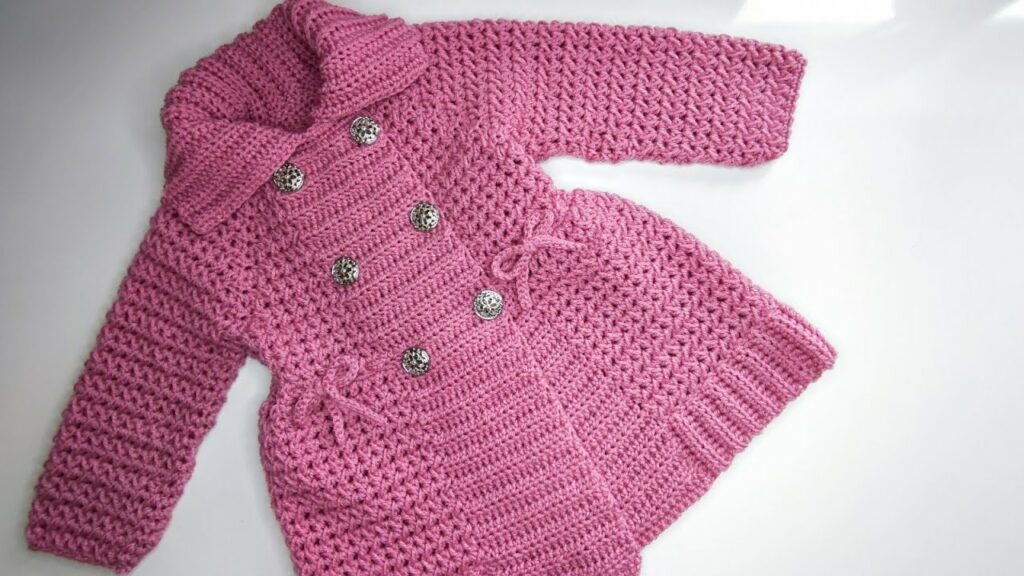
Unique Double-Breasted Challenges & Tips:
- Panel Width: Pay close attention to your pattern’s instructions for the width of the overlapping front panels. Too narrow, and it won’t lay correctly; too wide, and it will be bulky.
- Button Alignment: Precision is key. Use stitch markers to map out exactly where each button and buttonhole will be before you create them.
- Collar/Lapel Shaping: This is often the most complex part of a double-breasted garment. Follow your pattern closely, and don’t be afraid to use stitch markers to keep track of shaping points.
- Drape vs. Structure: Your yarn choice and stitch density will heavily influence whether your garment feels more like a soft cardigan or a structured coat.
- Pressing/Steaming: After blocking, a gentle press or steam (according to yarn care) can further enhance the crispness of the lapels and edges.
Care Instructions for Your Handmade Garment:
- Always follow your yarn label’s specific care instructions.
- Reshape and Lay Flat to Dry: Always gently reshape the garment while wet and lay it flat on a clean towel or drying rack to air dry completely. Do not hang, as this can stretch the fabric and distort the garment’s tailored shape.
video tutorial ;
Creating a crocheted double-breasted coat or cardigan for a girl is a challenging yet incredibly rewarding endeavor. The sophistication of the design, combined with the warmth and love of a handmade item, results in a truly unique and cherished garment that will turn heads and keep its wearer cozy in classic style. Happy hooking!
